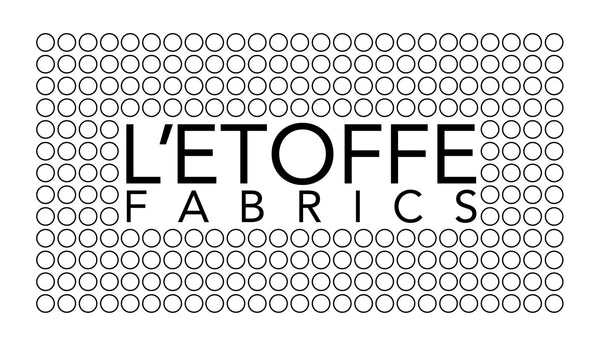
Home sewing guide to choosing non toxic detergents for laundering and caring for our fabrics.
Share
Fabric Care: Detergent
Considering “skin” is the largest organ in our body it’s important to be conscious of what kind of detergents and other substances are used to treat fabric that could potentially be absorbed into the skin. I am not a scientist but this is the logic I use to make fabric care decisions. So if it is good for the environment, it biodegrades quickly and without harm, is non toxic, and derived from natural ingredients - I figure it is safe for me to use. When a detergent contains chemicals that aren’t listed on the label (they are not required to list in the US including synthetic perfumes), or it contains chemicals that need to be tested on animals - to make sure they don’t grow tumors and get cancer - then it’s probably best not to use this even if the tests are inconclusive. Why go there? Below I have included some links to various resources on detergents and the steps to get more info on chemicals in our detergents. I will add to this list as well over time.
Design for the Environment Safer Detergents Stewardship Initiative now defunct program out of the Environmental Protection Agency but includes some good information: https://www.epa.gov/saferchoice/design-environment-safer-detergents-stewardship-initiative
FDA Fragrances in Cosmetics https://www.fda.gov/cosmetics/cosmetic-ingredients/fragrances-cosmetics#labeling
University of Washington study on carcinogenic dryer vent emission from chemicals in detergents, page has link to published study on other info: https://www.washington.edu/news/2011/08/24/scented-laundry-products-emit-hazardous-chemicals-through-dryer-vents/
Searchable database for all information on chemicals is Pub Chem:https://pubchem.ncbi.nlm.nih.gov/
PubChem is an excellent resource. It will give you all kinds of information on every chemical.
Basic Steps to acquire information on the ingredients in your detergents (they aren’t required to list them):
1. Go to company website, most large corporations now offer ingredient lists in an effort to be more transparent
2. Find your product, then the ingredients, including those in the perfumes. If the perfume content is not listed something is wrong.
3. Search for those chemical ingredients on the Pub Chem website and look for the hazards in the contents list on the right hand side.
4. Smart Label takes over where corporations like Tide don't want to list everything that is in a particular product on their site: https://smartlabel.org/product-search/?product=tide
For Example: Downy Unstopables Don’t Use Them
Ingredients are Hazardous to Humans and Aquatic Life (For Starters)
For a list of all Downy products that you can search by and view the ingredients list go https://www.smartlabel.org/products/Downy%20
When I searched for Downy Unstopables and clicked the perfume ingredients this is the list below it’s long - again I am not a scientist but…. all info below is taken from the Downy Website link https://smartlabel.pg.com/00037000613978.html
“For fragrance materials, not all CAS numbers are used in the US.
Ingredient descriptions have been provided by Downy.
SUB-INGREDIENTS
1,3-dioxolane-2-acetic acid, 2-methyl-, ethyl ester1,4-cyclohexanedicarboxylic acid, 1,4-diethyl ester
2,4-dimethyl-3-cyclohexene carboxaldehyde
2,6-dimethyl-7-octen-2-ol
2-acetonaphthone
2-buten-1-ol, 3-methyl-, 1-acetate
2-heptanol, 2,6-dimethyl-
2-heptylcyclopentanone
2-octanol, 2,6-dimethyl-
2-t-butylcyclohexyl acetate
2-t-butylcyclohexyloxybutanol
3a,4,5,6,7,7a-hexahydro-4,7-methano-1h-indenyl acetate
3-buten-2-one, 4-(2,6,6-trimethyl-1-cyclohexen-1-yl)-
3-octanol, 3,7-dimethyl-
4-tert-butylcyclohexyl acetate
6-octen-3-ol, 3,7-dimethyl-
6-octenenitrile, 3,7-dimethyl-
allyl caproate
anisaldehyde
benzoic acid, 2-hydroxy-, 2-methylpropyl ester
benzoic acid, 2-hydroxy-, cyclohexyl ester
benzyl acetate
benzyl salicylate
bicyclo[2.2.1]heptan-2-ol, 1,3,3-trimethyl-
butanoic acid, 2-methyl-, 1-methylethyl ester
butanoic acid, 2-methyl-, ethyl ester
citronellol
cyclamen aldehyde
cyclohexanepropanoic acid, 2-propen-1-yl ester
cyclohexanol, 2-(1,1-dimethylethyl)-, 1-acetate, (1r,2r)-rel-
cyclopentanone, 2-[2-(4-methyl-3-cyclohexen-1-yl)propyl]-
decanal
dimethyl heptenal
dipropylene glycol
ethyl 2,2-dimethylhydrocinnamal
ethyl methylbutyl ketoxime
ethyl trimethylcyclopentene butenol
eucalyptol
eugenia caryophyllus (clove) leaf oil
eugenol
gamma-undecalactone
heptamethyl decahydroindenofuran
heptanoic acid, 2-propen-1-yl ester
hexyl acetate
hexyl cinnamal
hexyl salicylate
isoamyl acetate
isoamyl allylglycolate
isobornyl acetate
isobutenyl methyltetrahydropyran
isobutyl methyl tetrahydropyranol
isopropylphenylbutanal
methoxypolyoxymethylene melamine
methyl anthranilate
methyl decenol
methyldihydrojasmonate
mixed ionones
naphthalene, 2-methoxy-
nonanal
octanal
pentanoic acid, 2-methyl-, ethyl ester
terpineol
tricyclodecenyl propionate
undecanal, 2-methyl-
vinyl homopolymer salt”
So I randomly chose “ isopropylphenylbutanal” and did a search for it on PubChem here: https://pubchem.ncbi.nlm.nih.gov/compound/86209
Data listed under the Safety and Hazards sidebar, image below is a screen shot from the PubCHem website, click image for link:

